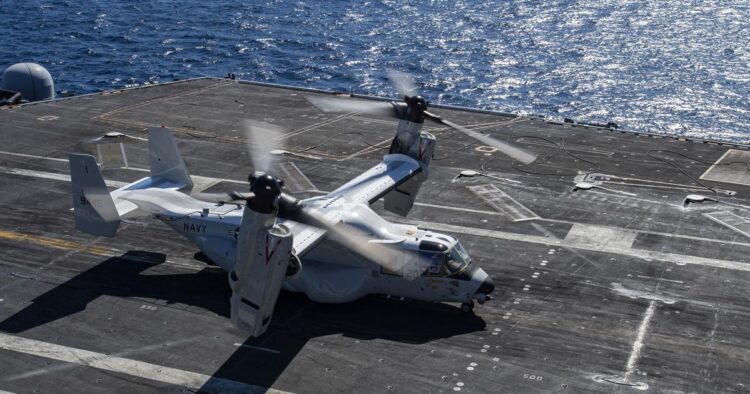Japan’s Defense Minister Minoru Kihara announced on Friday that the Japanese and American V-22 Ospreys are being safely operated in Japan. He assured that there are no plans to halt their flights, despite restrictions in the US.
Kihara made this statement following a fatal crash in November off Japan’s southern coast, which involved a US Osprey. This crash killed eight US servicemembers and led to a temporary grounding of the fleet.
Japanese and US military officials have been in close contact regarding the technical issues and safety of the Ospreys. Kihara emphasized that the Ospreys have been operated safely and that there is no cause for concern. He stated that Japan does not intend to seek a suspension of their operations.
Aircraft that had completed necessary maintenance, along with additional pilot training, have returned to flight service. These Ospreys are now operated with upgraded safety checks, improved maintenance, detailed flight plans, and enhanced emergency measures.
US Ospreys Undergoing Safety Assessments
Kihara was responding to a remark by Vice Adm. Carl Chebi, head of US Naval Air Systems Command, who said that US Ospreys won’t be permitted to fly their full range of missions until at least 2025. This is due to ongoing safety and performance assessments in the fleet.
The crash in November led to the grounding of the Osprey fleet for about four months. They resumed flights in March, but not to their full mission capabilities, such as carrier operations.
There are 29 US Ospreys deployed at US military bases in Japan and 14 others operated by Japan’s Ground Self Defense Force. These aircraft, which were also grounded, resumed flights in mid-March.
When asked about restrictions on Ospreys operated in Japan, Kihara said he couldn’t comment on specific restrictions due to national security reasons. He mentioned that he wasn’t informed in advance about Chebi’s remarks to the US Congress and that Japanese officials are seeking more details from Washington.
ALSO READ: “Ukraine and Japan Ink Comprehensive 10-Year Security Agreement Amidst G7 Summit Talks”
The Osprey, in use since 2007, can fly like an airplane and land like a helicopter. Critics argue that its innovative design has systematic flaws leading to unexpected failures. One of the reasons for the restricted flights is the ongoing work to fix a clutch failure identified as a primary factor in a fatal crash in California in 2022.
Over the lifespan of the Osprey program, Vice Adm. Chebi noted that a total of 64 service members have been killed in air and ground crashes, with 93 others injured. Despite these incidents, both Japanese and US military officials continue to operate the Ospreys with enhanced safety measures in place.

















Comments